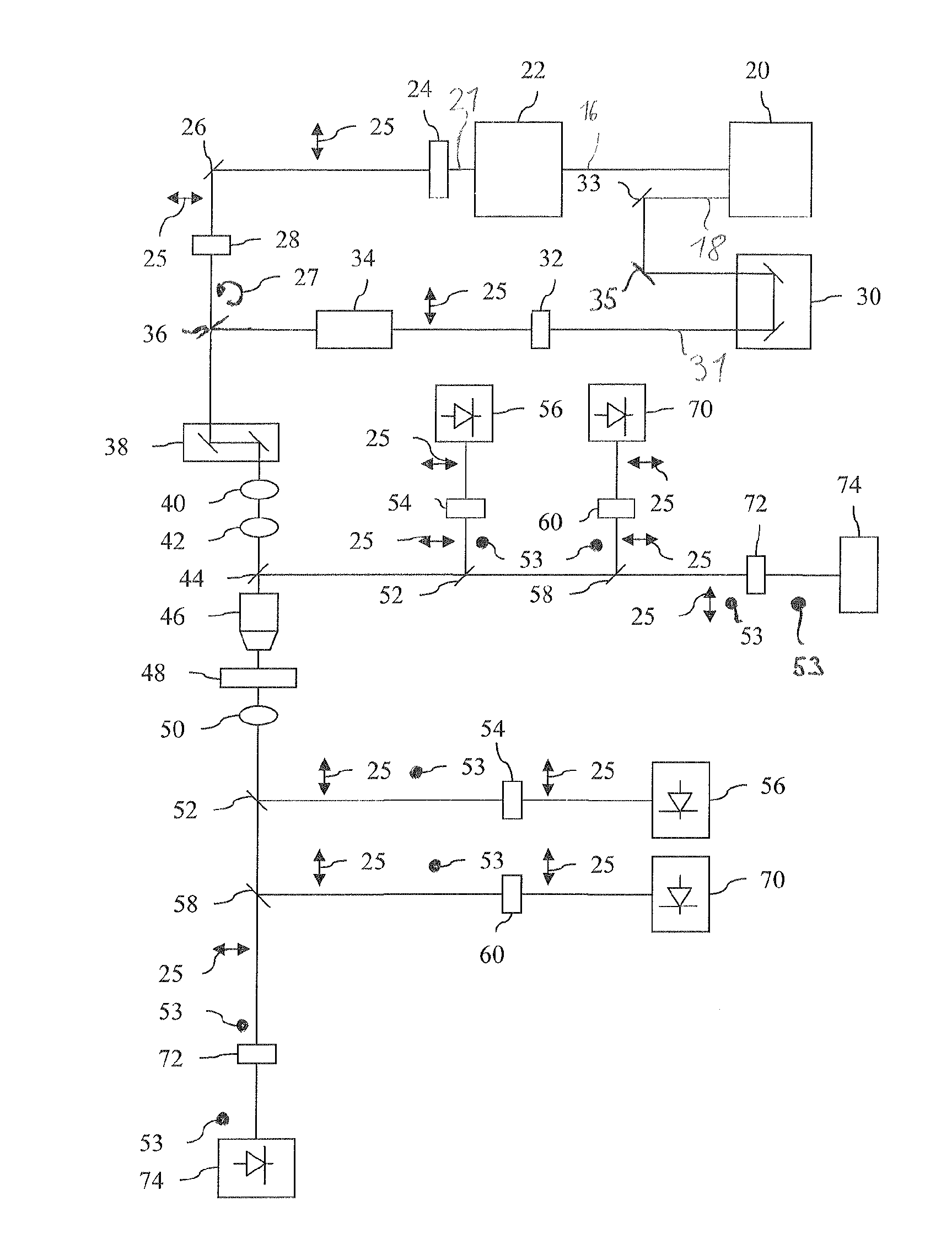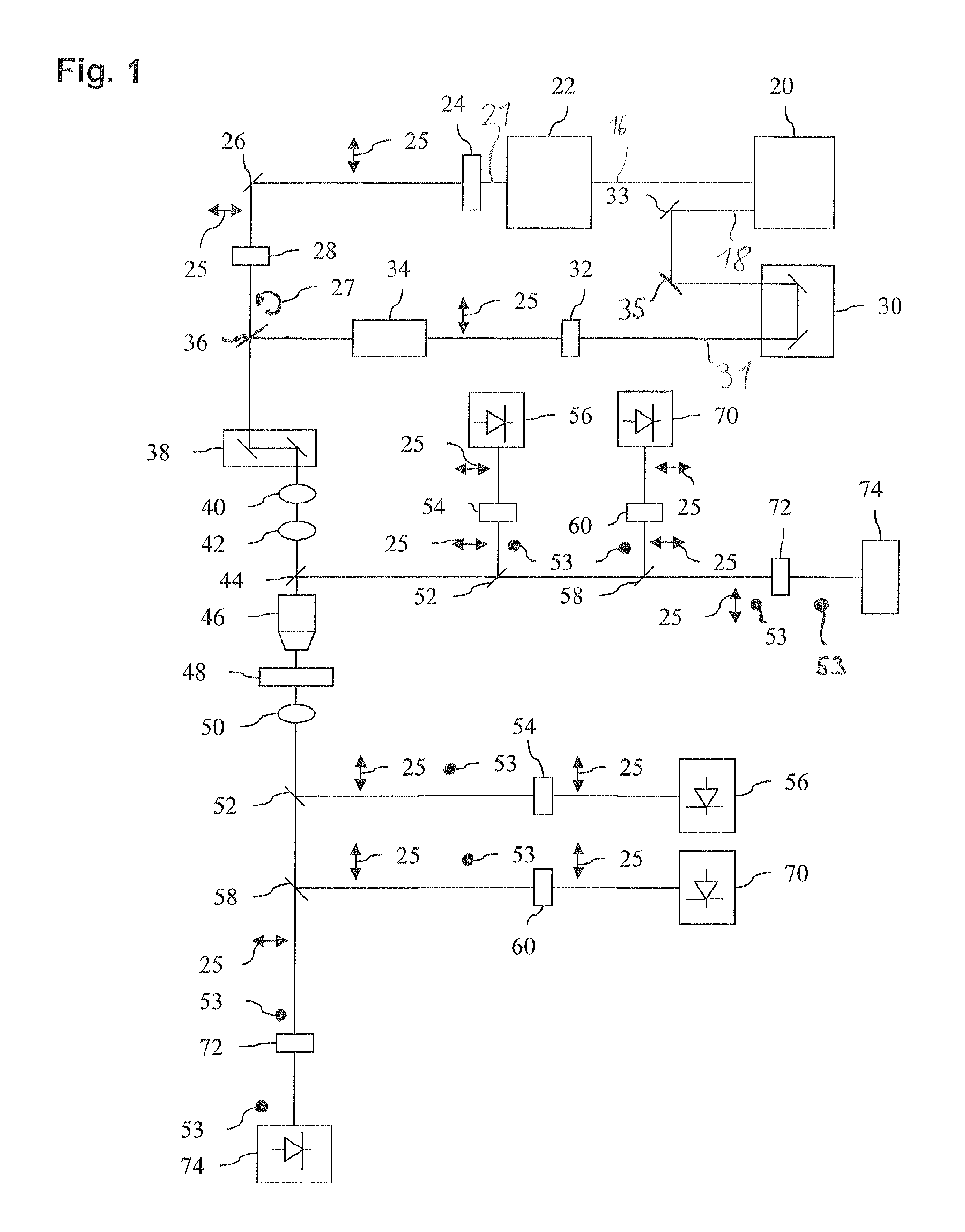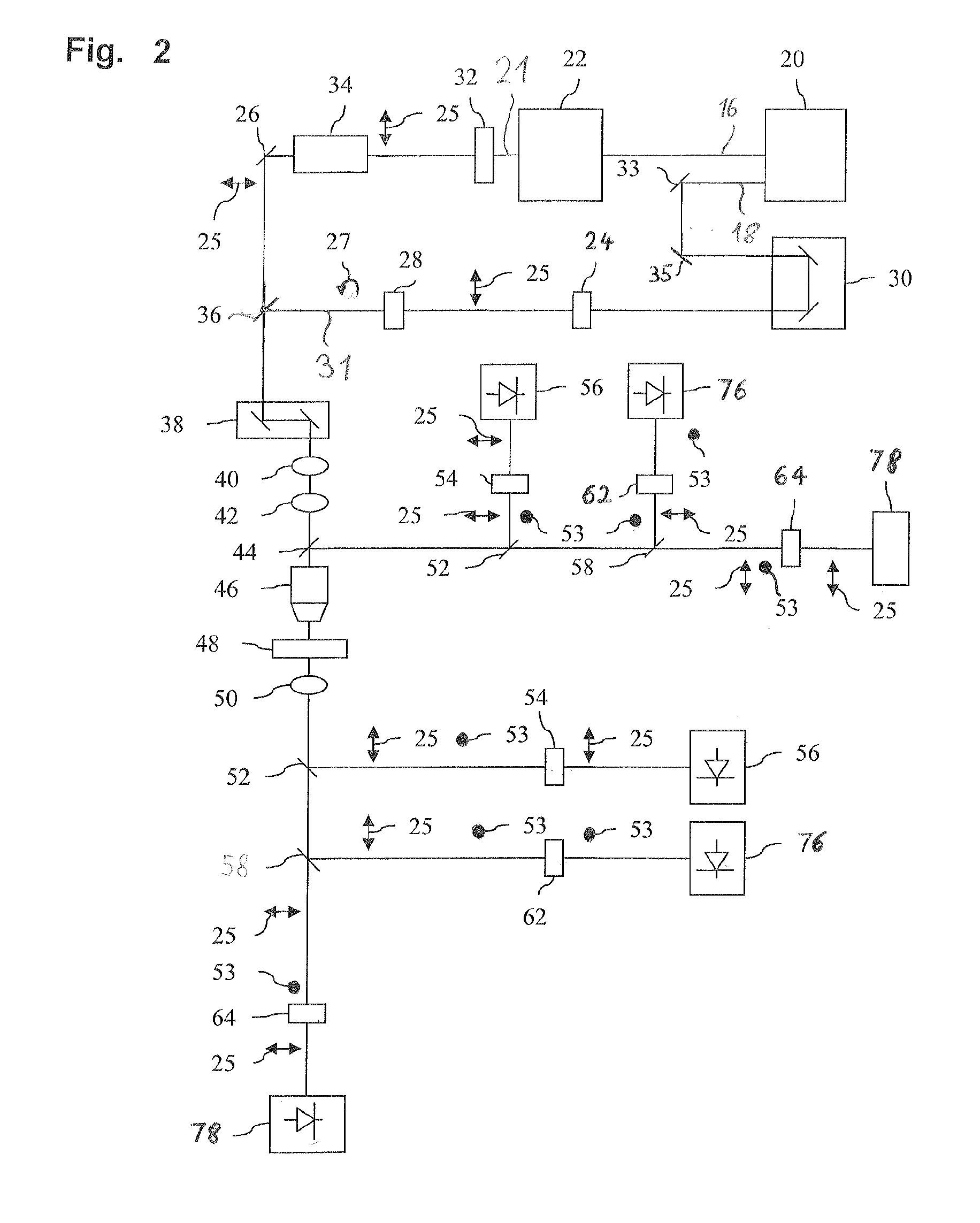Apparatus and method for multi-modal imaging in nonlinear raman microscopy
a multi-modal imaging and nonlinear raman technology, applied in the field of microscope apparatus, can solve the problems of inability to detect processes in biological and biochemical samples in real-time in a sufficiently precise manner, the detection radiation has the same wavelength and polarization, and the detection of the sought-after signal is more difficult, so as to achieve high chemical precision
- Summary
- Abstract
- Description
- Claims
- Application Information
AI Technical Summary
Benefits of technology
Problems solved by technology
Method used
Image
Examples
first embodiment
[0030]The detection light beams emanating from the sample 48 pass in forward direction via the condenser 50 and in reverse direction via the beam splitter 44 to the wavelength-selective elements 52, 58 and the detectors 56, 76, 78. The first wavelength-selective element 52 and the elements arranged downstream thereof such as the third polarization filter 54 and the first detector 56 as well as the second wavelength-selective element 58 correspond to the elements of the first embodiment identified with the same reference signs.
[0031]In contrast to the first embodiment, however, the radiation of the second wavelength range of the detection light beam is deflected to a sixth polarization filter 62 that s-polarizes the radiation of the second wavelength range and is then deflected to a fourth detector 76 that detects the Raman-induced Kerr effect. The fourth detector 76 preferably comprises a photomultiplier tube which is sensitive in the near infrared. In addition, the portion of the d...
second embodiment
[0032]During operation of the microscope the Stokes laser beam 31 with the fixed wavelength of 1064 nm is circularly polarized, and the pump laser beam 21 can be modulated. In a first step, for detecting fast-running processes in the sample 48, the pump laser beam 21 is not modulated, and with the aid of the first wavelength-selective element 52 radiation of the first wavelength range of the detection light beam is p-polarized and directed onto the first detector 56. Preferably at the same time, radiation of the second wavelength range of the detection light beam is s-polarized with the aid of the sixth polarization filter 62 and directed onto the fourth detector 76, the fourth detector 76 being sensitive at least in the second wavelength range and detecting the RIKES signal at wavelengths of the pump laser radiation.
[0033]In a second step, the pump laser beam 21 is modulated with the aid of the modulator 34. Radiation of the third wavelength range of the detection light beam is p-...
PUM
 Login to View More
Login to View More Abstract
Description
Claims
Application Information
 Login to View More
Login to View More - R&D
- Intellectual Property
- Life Sciences
- Materials
- Tech Scout
- Unparalleled Data Quality
- Higher Quality Content
- 60% Fewer Hallucinations
Browse by: Latest US Patents, China's latest patents, Technical Efficacy Thesaurus, Application Domain, Technology Topic, Popular Technical Reports.
© 2025 PatSnap. All rights reserved.Legal|Privacy policy|Modern Slavery Act Transparency Statement|Sitemap|About US| Contact US: help@patsnap.com



